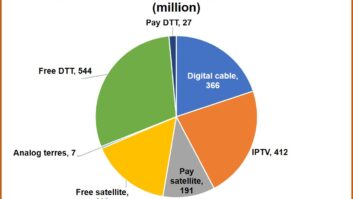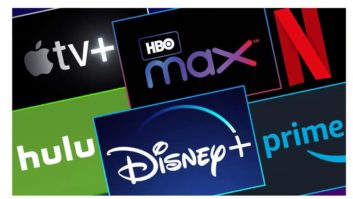Sport has been a key driver of growth in pay-TV for more than two decades. But the rise of sports OTT has introduced a new wave of competition and innovation into the market.
As a result, traditional providers have been prompted to adapt their pricing, packaging and overall value propositions to stay successful.
Meanwhile, several emerging specialist sports OTT aggregators are creating value-for-money global offerings, aggregating tier-two and three rights not acquired by pay-TV providers. What’s more, over a third of the top 25 football clubs and six of the top 10 biggest leagues and federations now offer their own direct-to-consumer premium OTT services. Major internet companies are also experimenting with sports content, although their strategies remain unclear.
Of course, this proliferation of sports OTT services and providers potentially reduces demand for pay-TV. But despite this significant market upheaval, operators needn’t fear a relegation battle just yet – there’s still ample opportunity to top the table.
Traditional pay-TV providers are increasingly focusing on tier-one rights – 36 and 34 per cent of Sky and BT TV subscribers respectively are paying to gain access to their sports content according to the latest report from the Pay-TV Innovation Forum, The Global Market for Premium Sports OTT Services.
A new type of ‘skinny bundle’, which focuses solely on sports, is also emerging. In Europe, Sky has launched sports packages that enable access to the English Premier League through Now TV in the UK and the Bundesliga through Sky Ticket in Germany. This enables consumers to purchase access to tier-one sports rights for just a day without signing up to a larger package.
And in terms of distribution, the report found that mobile is the first priority for all 65 of the world’s top services (over 90 per cent of services are on iOS and Android), followed by Apple TV and the streaming devices, with Smart TVs having the lowest priority.
Now, pay-TV companies are well-placed to retain tier-one sports rights. Around the globe, providers have been able to subsidise the rising cost of the most valuable live sports rights with high-margin broadband businesses.
In addition, the pay-TV providers already own billing relationships with millions of consumers in their key markets. The appreciation of the value of tier-one sports rights over the last two decades has been driven primarily by the pay-TV market for this reason. Pay-TV providers can consolidate by rationalising their investment in tier-two sports and entertainment and focusing spend on premium content.
But it’s not just opportunities ahead. The proliferation of high-speed broadband and connected devices has made content piracy more easily accessible than ever before, for both pirates and consumers.
As the report highlights, pay-TV providers must continue to take steps to limit the impact of sports streaming piracy.
It’s estimated that more than 13 million people around the world watched an illegal stream of Anthony Joshua’s heavyweight boxing defeat in June 2019, with 93 per cent of the unlicensed audience watching the fight on YouTube.
With levels of 5G adoption expected to increase over the next few years, industry participants expect to see a rise in illicit streaming of content.
Given this situation, it is vital that distributors, rights owners, social media networks and legislators continue to work together to develop and leverage new technology to protect the value of live sports content.
With this context in mind, the report highlights seven major implications of the rise in sports OTT for traditional pay-TV providers.
- It’s mission-critical for operators to retain tier-one sports rights in their bundles
- Pay-TV operators appear well-placed to retain these rights given their ability to cross-subsidise sports from high-margin broadband businesses and their existing billing relationships
- The biggest challenges they are likely to face are from Amazon, should it decide to prioritise tier-one sports rights in key markets, or major sports broadcasters such as ESPN reserving their key rights for their direct-to-consumer service
- Pay-TV providers will consolidate by rationalising their investment in tier-two sports and entertainment and focusing spend on premium content
- They and other premium sports OTT providers will continue to experiment with different pricing and packaging models, seeking the right balance between being attractive to cord-cutters, and being profitable.
- Pay-TV providers will seek to evolve their service offerings in response to innovations from agile challenger brands – ranging from shared viewing experiences and personalised content through to data-services
- Finally, addressing live sports piracy is an important priority. And ultimately, collaboration between different industry participants, including rights owners, distribution platforms and policy makers, is crucial
The rise of sports OTT has introduced a new wave of competition and innovation into the market, prompting traditional providers to adapt their pricing, packaging and overall value propositions to stay successful. By understanding the key implications of the growth of sports OTT services, the pay-TV industry along with sports rights holders can seize the sports OTT opportunity and be well-prepared for the future.






